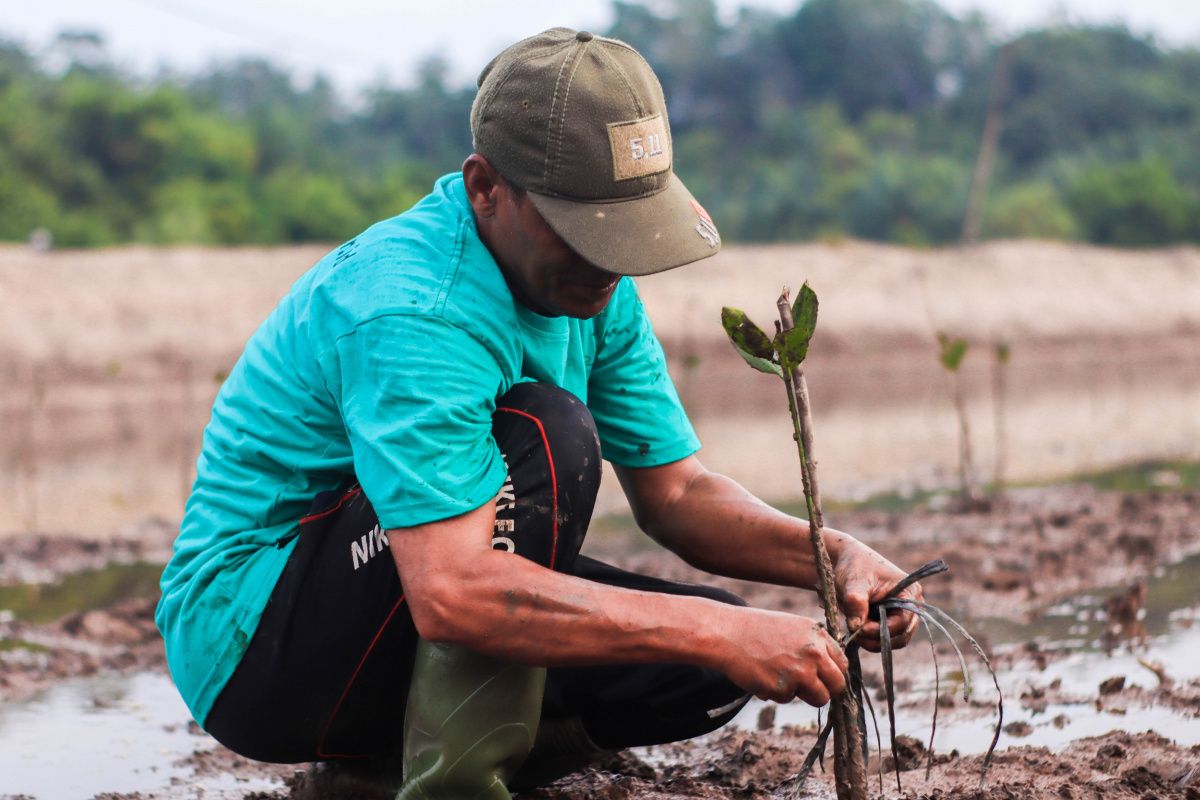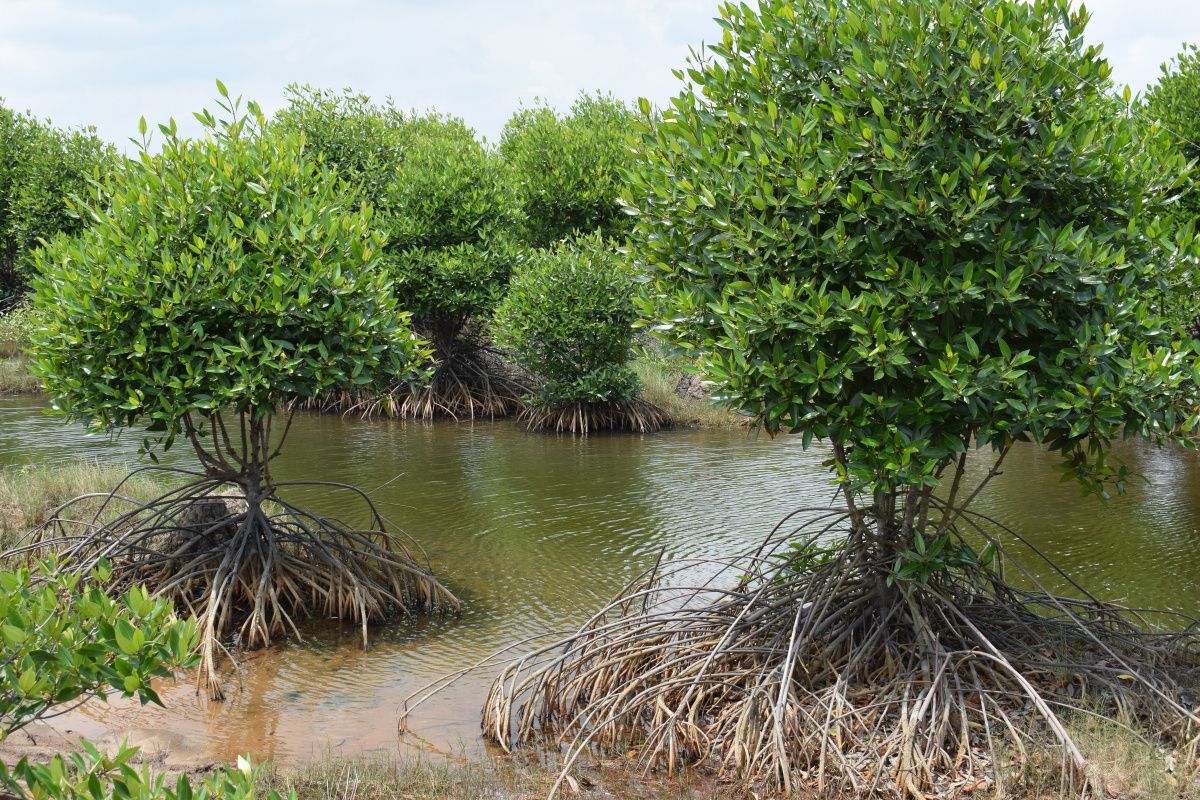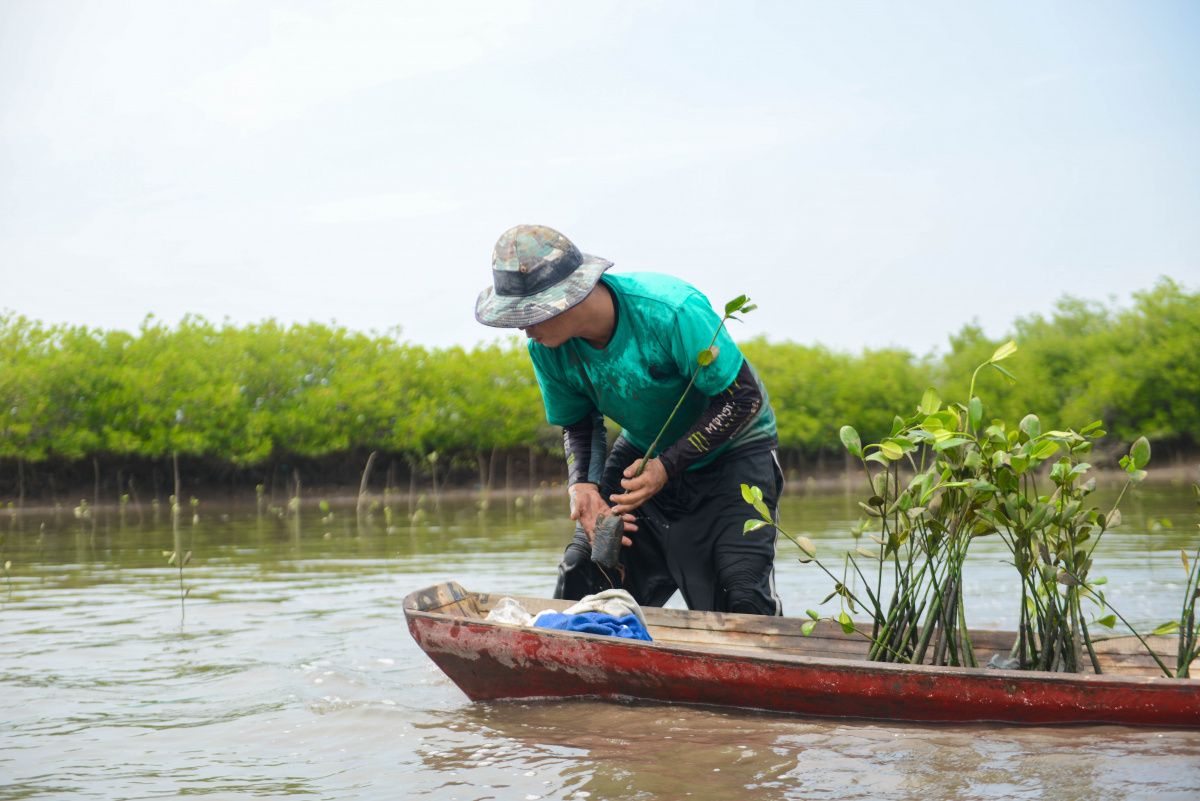
Marine Vegetation: an important Carbon Sink
In the 1990s, scientists recognized the importance of marine vegetation as a significant carbon sink. Carbon sequestration and storage rates are comparable to those in carbon-rich terrestrial ecosystems, such as tropical rainforests or peatlands.
Notably mangrove ecosystems are true carbon storage powerhouses. They can shop up to 10 times more carbon per hectare than land forests. They sequester about 10% of global carbon.
In addition, the deposition of carbon dioxide in the sediments of coastal ecosystems can persist for millennia. Indeed, wet coastal soils have much lower oxygen levels than forest soils, which slows the decomposition rate. This results in dead plant material takes longer to decompose. As a result, carbon stored in coastal soils can remain trapped there for thousands of years. When the plants die, the organic material falls to the ocean floor and stays in the ground, where it can remain undisturbed for thousands of years!

Blue Carbon Services and other positive side effects
Blue Carbon Services can also:
- Improve water quality and create jobs in fisheries.
- Represent important habitats for plenty of marine and coastal animals.
- Prevent climate damage. Mangroves can protect around 15 million people from flooding yearly. They could help reduce more than $65 billion in property damage. Moreover, sea levels rise as the soil accumulates, allowing them to shop even more carbon.
Towards the development of a nature-based financing framework
Nature-based climate solutions are essential in conserving and reducing carbon emissions. Some recognized approaches, such as purchasing carbon credits, can help finance them. In addition, some emerging solutions, such as algal forest protection and restoration and expansion, as well as strategies to reduce bottom trawling, could also save CO2 in the future.
Several countries are developing policies and programs through activities related to the United Nations Framework Convention on Climate Change (UNFCCC) and efforts to ensure access to carbon finance through UNFCCC mechanisms and related funding streams.
In that respect, the European Parliament adopted a resolution in May 2022 calling on the EU to launch and fund scientific research programs to map carbon-rich marine habitats. The resolution calls for this research to provide the scientific basis for zones free from destructive fishing activities. The EU is currently negotiating who, how - and whether - to raise funds. A firm policy on mapping and protecting blue carbon habitats represents a unique opportunity to implement the European Green Deal, the Paris Agreement, and the Marine Strategy Framework Directive, as well as Europe's efforts to improve the state of marine ecosystems. In addition, in June 2022, the European Commission presented its draft proposal on nature restoration, which includes binding targets to restore degraded ecosystems across the EU. Based on the best available science, it consists of a positive commitment to restoring marine habitats known as carbon reservoirs.
In that respect, an environment-based financing framework should encourage regenerative blue carbon projects to play an essential role in achieving net zero and reducing the impacts of climate change.
Discover our mangroves restoration projects:
Our project in Sumatra, in Indonesia, and its benefits for local populations
Our mangrove restoration project in Senegal (raising awareness among schoolchildren)
References :
Ahalya A, Jin Soon Park, “Blue Carbon Stock of Mangrove Ecosystems”, Nature Communications, 2019, 10:3998.
EFESE, Rapport « Du constat à l’action : rapport de première phase de l’évaluation française des écosystèmes et des services écosystémiques », octobre 2020.
Hochard J.P., Hamilton S., Barbier E.B., “Mangroves shelter coastal economic activity from cyclones”, Proc. Natl. Acad. Sci., USA., 2019; 116: 12232-12237.
Macreadie P.I., Anton A., Raven J.A., Beaumont N., Connolly R.M., Friess D.A., Kelleway J.J., Kennedy H., Kuwae T., Lavery P.S. et al., “The future of Blue Carbon science”, Nat. Commun. 2019, 10: 3998.
Nderklift M.A., Marcos-Martinez R., Butler J.R.A., Coleman M., Lawrence A., Prislan H., Steven A.D.L., Thomas S., “Constraints, and opportunities for market-based finance for the restoration and protection of blue carbon ecosystems”, Mar. Policy., 2019.
Wylie L., Sutton-Grier A.E., Moore A., “Keys to successful blue carbon projects: Lessons learned from global case studies”, Mar. Policy. 2016; 65: 76-84.
Yando E.S., Alemu J.B., Wong L.-W., Soto S.D., Bhatia N., “Ecosystem services and disservices of mangrove forests and salt marshes”, Oceanography and Marine Biology., 2020; 58: 107-142.
